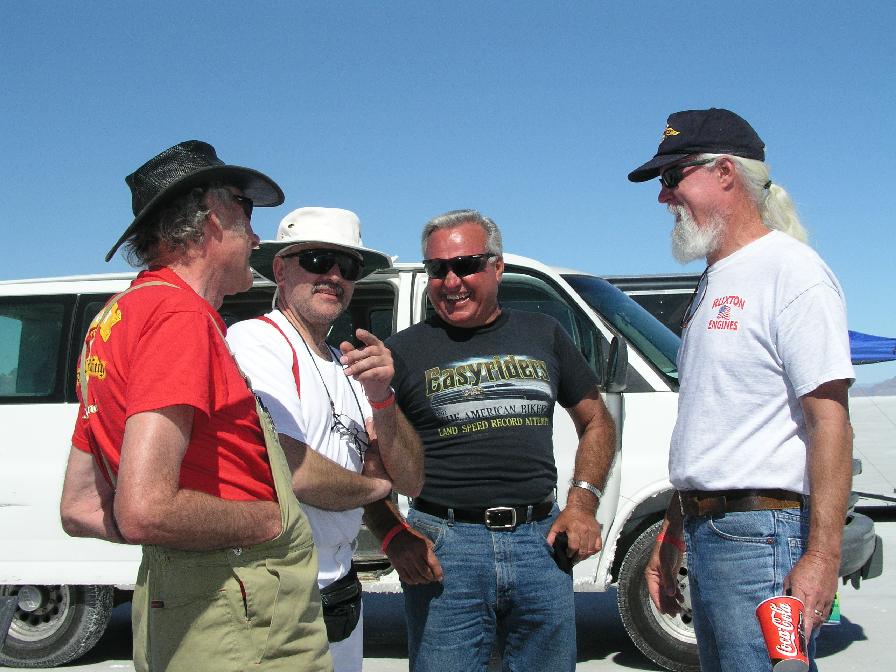
Mission Vincent
In 2001 Steve decided to try to make a Vincent go fast like a modern bike.
Steve Hamel, Steve Ferree, and I worked together at W.I.W in the Triumph days ('70s) when Hamel was a 'pup' and just entering the 'industry'. After all these years, of course, Hamel is no longer the 'pup' but one of us 'old timers'.
When Steve decided to try to increase the performance of the new Vincent, he consulted with Steve Ferree and Jerry Wilhelmy, and Mike Roland and myself.
Steve had gone down the 'Vintage' road which requires mechanical knowledge, collecting the tools to resurrect used-up parts, and 'networking'. On top of that he has had to earn a living.
Of course, Steve has amassed a huge knowledge of motorcycles and the internal combustion engine but he wanted to learn the how's and why's of performance and do the work himself. Because of his experience, he knew that he could take the most direct route by getting some direction from knowledgeable performance guys.
Basically, Hamel is the perfect student because you can tell him what he needs to do and he just does it and it's done right.
Because of his competence, I could stay distant from the project and he'd just call whenever the next phase was complete or the rare question came up.
Hamel had access to a Superflow 110 Flow-bench, and started the port development process. With the help of Ferree, Wilhelmy and Roland he defined the cylinder head flow values he'd need to make 100HP. All he had to do was create it.
Well, he did!... Then it was a running engine in the frame....First Ride...... and now it is tuned!!!!!
Hot off the dyno!

It took some adjustment in my own mind to understand the differences between this ancient piece and the current stuff I usually tune, but once I did, everything fell into place.
First, the valve train is..... uhmmmm... what it is. That means that we couldn't just make the short duration, high lift cams that we would like to use. Thus, Steve chose existing profiles that (by our best guess) could do the job.
What this did was give us cam timing with bags more overlap than I'm used to. This causes tuning problems just like the old Harley Sportster, open-pipe bikes. Namely, mega-double carburetion at lower RPMs.
Once I put that all together, I knew that it won't pull through that RPM range at full throttle. The fix is to nurse it through the range at part throttle. Duh!!
Live with it!!
You can see the zone below 5000RPM where I'm at part throttle.
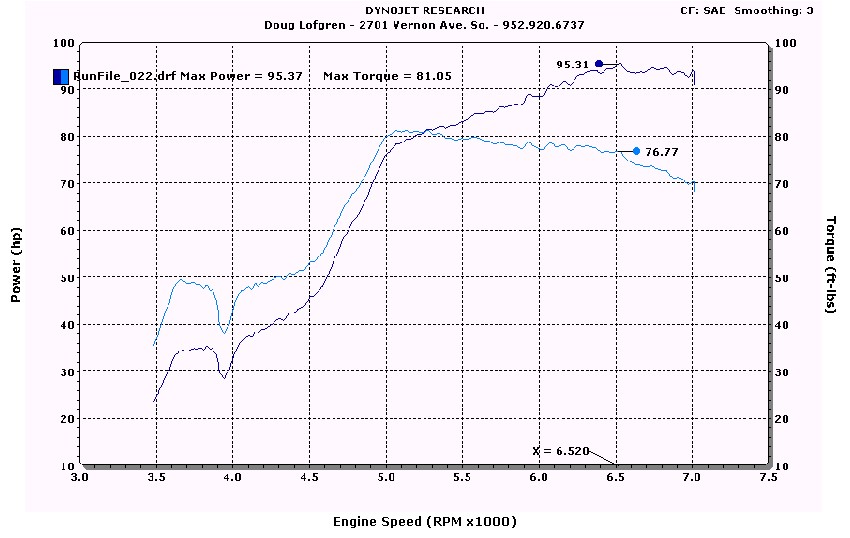
With 95 HP on tap, the thing should go pretty fast.
Steve Ferree suggested that Hamel try larger exhaust pipes. The ones we had tested with up to this point were 1 3/4" O.D.
Hamel came back with 1 7/8" pipes that were 2" shorter. Things looked encouraging, but the chart looked like the pipe was tuning too high.
We added 2" to the pipe length and it liked it a lot.
Run # 33 (black) is with the 26" pipe length, and #34 is 28".
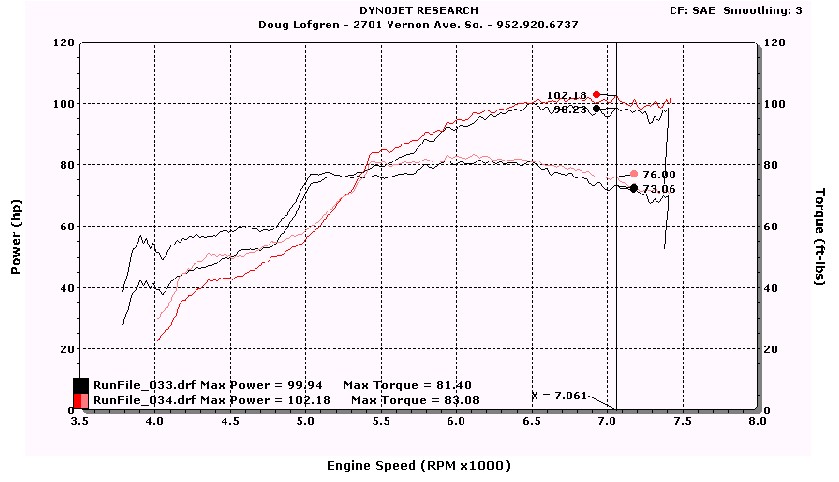
It looks like there isn't much of a down-side to the larger exhaust pipe diameter.
Bonneville
I rode out to Utah with Herb Grika, who is documenting this silliness.
The event was supposed to start Monday afternoon, but a thunderstorm on the weekend made it all wet.
The photo below shows the view from the end of the pavement on Monday.
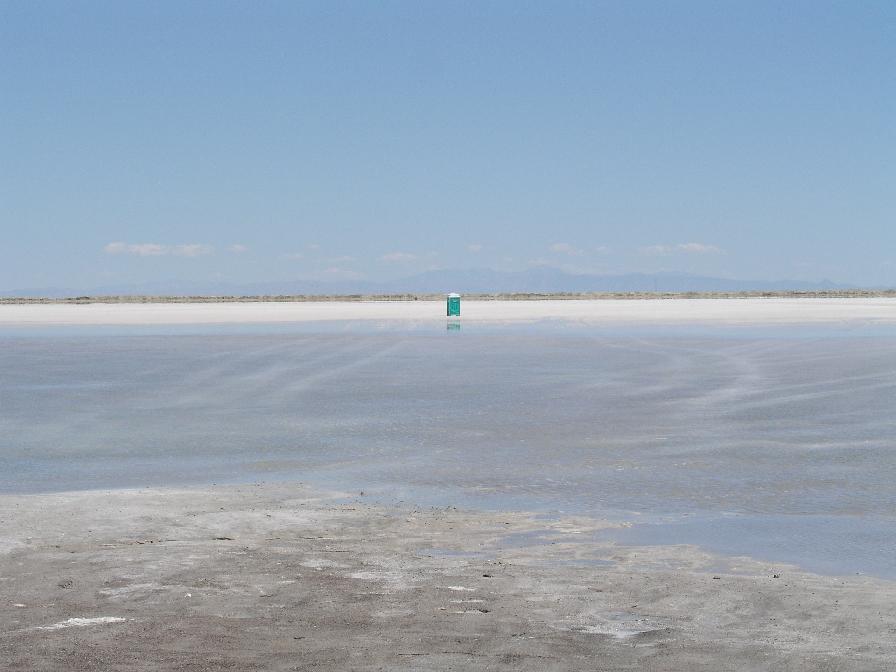
We got out to the pits on Tuesday, but there was about 1/4" of water there and across the center of the course. That is the area where the timing lights are set up.
There was plenty of time for photo opportunities. Below is a Picture of the bike with the aluminum seat that Don Severson made.
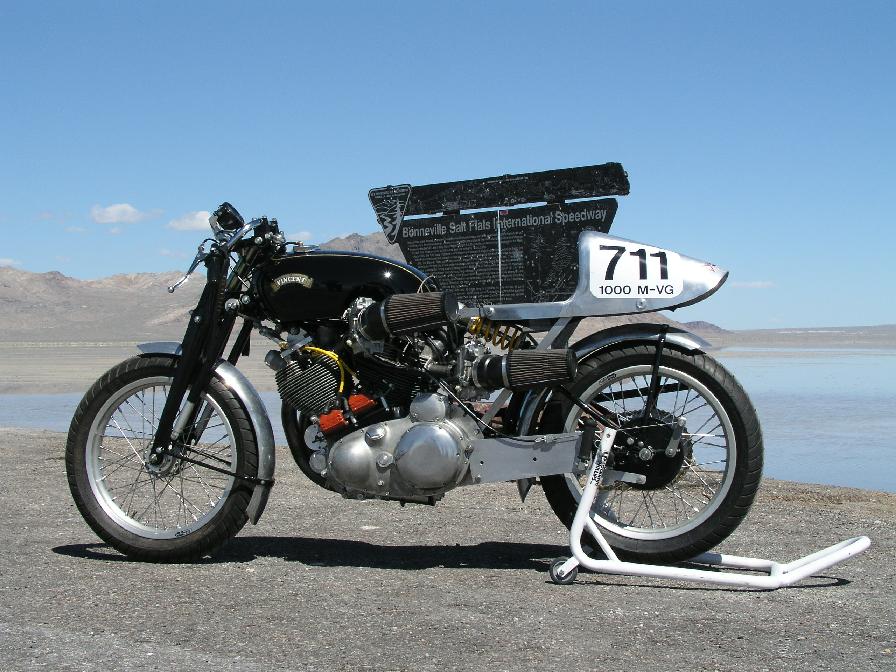
On Wednesday the course was OK except for the timing area and that sucked a bunch of MPH out of everyone's runs. I'm pretty sure that Steve went into the timing area near 150 MPH but his first run was 137 MPH. Steve reported that he could feel it slow down as he entered the timing area, and we could even hear the engine spin up as he reached the center of the timing area, from the start of the short course 2 miles away.
On Thursday, after trying a gearing change, which the bike didn't like, we changed back and he went 142 MPH on a return run.
The tuning paid off. Steve had 4 good runs, each one sounding stout. Everyone was impressed with the way it sounded even if we were a little disappointed with the speed.
The only non-American V-twin that went faster than the Vincent was an Aprilia Mille.
All of the waiting wasn't a problem for me because of all the great folks who were there. The photo below shows (L to R) Terry Prince (Vincent engine builder and parts supplier) Steve Hamel, Dave Campos, and Kieth Ruxton (engine builder for lots of H-Ds including the streamliner that Dave Campos broke records in.)
